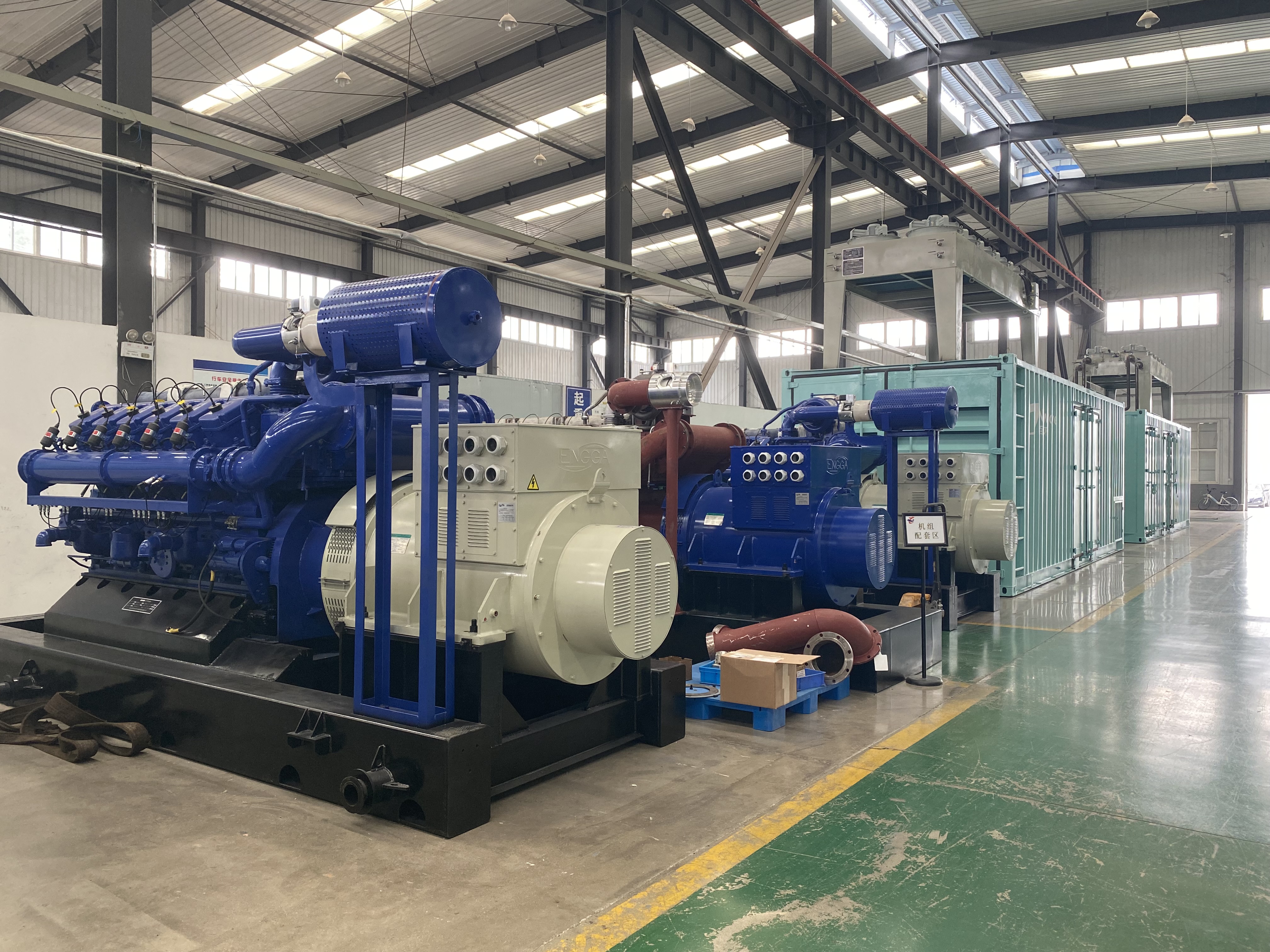生物质发电是利用生物质所具有的生物质能进行的发电,是可再生能源发电的一种,包括农林废弃物直接燃烧发电、农林废弃物气化发电、垃圾焚烧发电、垃圾填埋气发电、沼气发电。
Biomass power generation is a type of renewable energy generation that utilizes the biomass energy possessed by biomass. It includes direct combustion of agricultural and forestry waste for power generation, gasification of agricultural and forestry waste for power generation, waste incineration for power generation, landfill gas for power generation, and biogas for power generation.
生物质发电包括农林废弃物直接燃烧发电、农林废弃物气化发电、垃圾焚烧发电、垃圾填埋气发电、沼气发电等。
Biomass power generation includes direct combustion of agricultural and forestry waste for power generation, gasification of agricultural and forestry waste for power generation, waste incineration for power generation, landfill gas for power generation, biogas for power generation, etc.
1、农林废弃物直接燃烧发电原理
1. Principle of direct combustion of agricultural and forestry waste for power generation
直接燃烧发电是将生物质在锅炉中直接燃烧,生产蒸汽带动蒸汽轮机及发电机发电。生物质直接燃烧发电的关键技术包括生物质原料预处理、锅炉防腐、锅炉的原料适用性及燃料效率、蒸汽轮机效率等技术。
Direct combustion power generation refers to the direct combustion of biomass in a boiler to produce steam and drive a steam turbine and generator to generate electricity. The key technologies for biomass direct combustion power generation include biomass raw material pretreatment, boiler anti-corrosion, boiler raw material applicability and fuel efficiency, steam turbine efficiency, and other technologies.
燃烧秸秆发电时,秸秆入炉有多种方式:可以将秸秆打包、粉碎造粒(压块)、或打成粉或者与煤混合后末打入锅炉。其生产过程为:将秸秆等生物质加工成适于锅炉燃烧的形式(粉状或块状),送入锅炉内充分燃烧,使储存于生物质燃料中的化学能转变成热能;锅炉内的热后产生饱和蒸汽,饱和蒸汽在过热器内继续加热成过热蒸汽进入汽轮机,驱动汽轮发电机组旋转,将蒸汽的内能转换成机械能,后由发电机将机械能变成电能。
When burning straw for power generation, there are various ways for straw to be fed into the furnace: straw can be packaged, crushed into granules (crushed), or crushed into powder, or mixed with coal and finally fed into the boiler. The production process is to process biomass such as straw into a form suitable for boiler combustion (powder or block), and send it into the boiler for full combustion, converting the chemical energy stored in biomass fuel into thermal energy; The heat in the boiler generates saturated steam, which is further heated into superheated steam in the superheater and enters the turbine, driving the turbine generator unit to rotate, converting the internal energy of the steam into mechanical energy. Finally, the generator converts the mechanical energy into electrical energy.
2、生物质气化发电原理
2. Principles of biomass gasification for power generation
生物质气化发电技术是指生物质在气化炉中转化为气体燃料,经净化后直接进入燃气机中燃烧发电或者直接进入燃料电池发电。气化发电的关键技术之一是燃气净化,气化出来的燃气都含有一定的杂质,包括灰分、焦炭和焦油等,需经过净化系统把杂质除去,以保证发电设备的正常运行。
Biomass gasification power generation technology refers to the conversion of biomass into gas fuel in a gasifier, which is purified and directly burned in a gas engine for power generation or directly fed into a fuel cell for power generation. One of the key technologies for gasification power generation is gas purification. The gasified gas contains certain impurities, including ash, coke, and tar, which need to be removed through a purification system to ensure the normal operation of the power generation equipment.
生物质气化发电技术的基本原理,是把生物质转化为可燃气,再利用可燃气推动燃气发电设备进行发电。它既能解决生物质难于燃用而且分布分散的缺点,又可以充分发挥燃气发电技术设备紧凑而且污染少的优点,所以,气化发电是生物质能有效、洁净的利用方法之一。

The basic principle of biomass gasification power generation technology is to convert biomass into combustible gas, and then use combustible gas to drive gas power generation equipment for power generation. It can not only solve the shortcomings of biomass being difficult to burn and distributed dispersedly, but also fully utilize the advantages of compact equipment and low pollution of gas power generation technology. Therefore, gasification power generation is one of the most effective and clean utilization methods of biomass energy.
气化发电过程主要包括三个方面:一是生物质气化,在气化炉中把固体生物质转化为气体燃料;二是气体净化,气化出来的燃气都含有一定的杂质,包括灰分、焦炭和焦油等,需经过净化系统把杂质除去,以保证燃气发电设备的正常运行;三是燃气发电,利用燃气轮机或燃气内燃机进行发电,有的工艺为了提高发电效率,发电过程可以增加余热锅炉和蒸汽轮机。
The gasification power generation process mainly includes three aspects: firstly, biomass gasification, which converts solid biomass into gas fuel in a gasifier; The second is gas purification. The gasified gas contains certain impurities, including ash, coke, and tar, which need to be removed through a purification system to ensure the normal operation of gas power generation equipment; The third is gas power generation, which utilizes gas turbines or gas internal combustion engines for power generation. In some processes, in order to improve power generation efficiency, waste heat boilers and steam turbines can be added to the power generation process.
3、沼气发电原理
3. Principles of biogas power generation
沼气发电主要原理是利用工农业或城镇生活中的大量有机废弃物经厌氧发酵处理产生的沼气驱动发电机组发电。用于沼气发电的设备主要为内燃机,一般由柴油机组或者天然气机组改造而成。
The main principle of biogas power generation is to use a large amount of organic waste in industry, agriculture, or urban life to drive the power generation unit with biogas generated through anaerobic fermentation treatment. The equipment used for biogas power generation is mainly internal combustion engines, which are generally modified from diesel or natural gas units.
沼气发电系统用一个密闭型的热动力装置(BTTPU),包括一套沼气发动机、发电机和一台带出热量的热交换器。与现用的液体发酵主要区别在于物料有机质不需要液化过程,在高温厌氧环境下将生物质原料直接装入模块式的密封发酵设备,在渗滤液环流作用下使干燥物料潮湿,经过几周时间,变成甲烷含量达70% ~ 80%的高质量沼气,通过沼气发动机转换成电能以及余热利用。
The biogas power generation system uses a closed thermal power unit (BTTPU), which includes a biogas engine, generator, and a heat exchanger with heat output. The main difference from current liquid fermentation is that the organic matter of the material does not require a liquefaction process. In a high-temperature anaerobic environment, the biomass raw material is directly loaded into a modular sealed fermentation equipment. Under the circulation of the leachate, the dry material is moist, and after a few weeks, it becomes high-quality biogas with a methane content of 70% to 80%. It is converted into electricity through a biogas engine and waste heat is utilized.
4、垃圾焚烧发电
4. Waste incineration power generation
垃圾焚烧发电包括垃圾焚烧发电和垃圾气化发电,其不仅可以解决垃圾处理的问题,同时还可以回收利用垃圾中的能量,节约资源,垃圾焚烧发电是利用垃圾在焚烧锅炉中燃烧放出的热量将水加热获得过热蒸汽,推动汽轮机带动发电机发电。垃圾焚烧技术主要有层状燃烧技术、流化床燃烧技术、旋转燃烧技术等。发展起来的气化熔融焚烧技术,包括垃圾在450°~640°温度下的气化和含碳灰渣在1300℃以上的熔融燃烧两个过程,垃圾处理彻底,过程洁净,并可以回收部分资源,被认为是具有前景的垃圾发电技术。
Garbage incineration power generation includes garbage incineration power generation and garbage gasification power generation. It not only solves the problem of garbage treatment, but also recycles and utilizes the energy in garbage, saving resources. Garbage incineration power generation uses the heat released by garbage burning in the incineration boiler to heat water to obtain superheated steam, which drives the steam turbine to drive the generator to generate electricity. Waste incineration technology mainly includes layered combustion technology, fluidized bed combustion technology, rotary combustion technology, etc. The developed gasification and melting incineration technology includes two processes: gasification of waste at temperatures ranging from 450 ° to 640 ° C and melting combustion of carbon containing ash above 1300 ° C. The waste is thoroughly treated, the process is clean, and some resources can be recovered, making it the most promising waste power generation technology.
5、垃圾填埋气发电
5. Landfill gas power generation
在垃圾填埋的过程中,因为填埋场垃圾堆放体内部缺少氧气,垃圾中的有机物会发酵产生出大量的沼气(填埋气),平均每吨垃圾在填埋场寿命期内可产生约100—200立方米的填埋气体,其主要成分是甲烷、二氧化碳、硫化氢、氮等气体。
During the process of landfilling, due to the lack of oxygen inside the landfill, the organic matter in the waste will ferment and produce a large amount of biogas (landfill gas). On average, each ton of waste can produce about 100-200 cubic meters of landfill gas during the lifespan of the landfill, which is mainly composed of methane, carbon dioxide, hydrogen sulfide, nitrogen, and other gases.
垃圾填埋气发电采用了完整地垃圾沼气收集和利用理念,通过的垃圾沼气收集系统,输送系统,沼气净化系统和沼气发电系统,将垃圾沼气完全利用,产生电力,并入城市大电网之中,向电力用户提供清洁能源。因此,现阶段垃圾填埋气发电是一种既能有效利用废气资源发电,又能减少空气污染的无害化处理方式,是符合国家“节能减排”提倡的大方向目标的项目,是典型的“低碳经济”。
Landfill gas power generation adopts a complete concept of garbage and biogas collection and utilization. Through advanced garbage and biogas collection systems, transportation systems, biogas purification systems, and biogas power generation systems, garbage and biogas are fully utilized to generate electricity, which is integrated into the urban power grid and provides clean energy to electricity users. Therefore, at present, landfill gas power generation is a harmless treatment method that can effectively utilize waste gas resources for power generation while reducing air pollution. It is a project that conforms to the national goal of "energy conservation and emission reduction" and is a typical "low-carbon economy".
 联系 - 热线
联系 - 热线

 联系 - 热线
联系 - 热线


